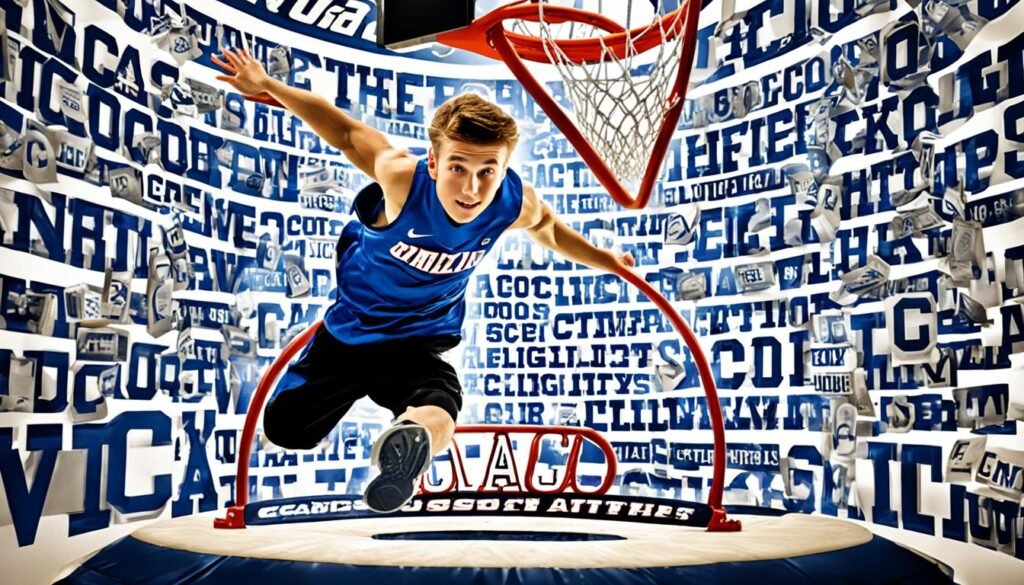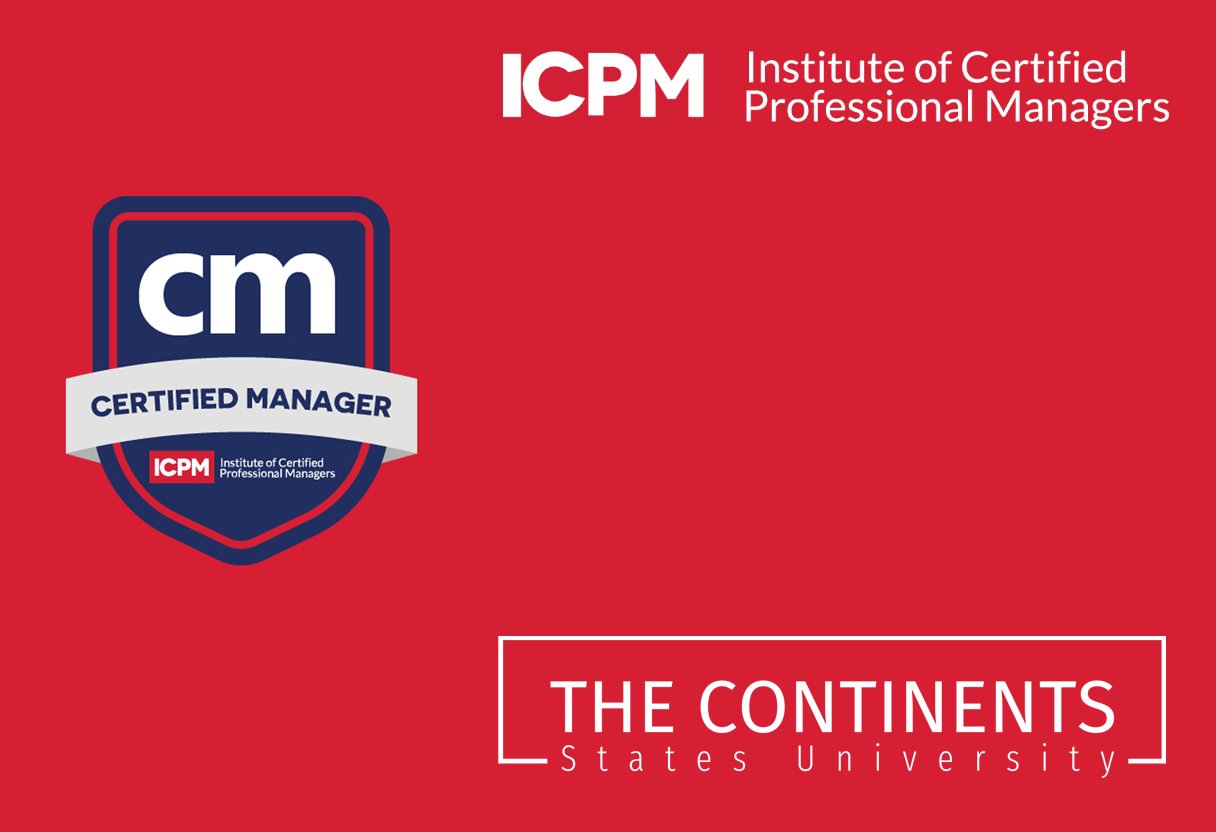Receiving an athletic scholarship to compete at the college level is the ultimate goal for many student-athletes. However, there are plenty of misconceptions about how scholarship offers work and how much aid student-athletes actually receive. College isn’t cheap, so understanding the details of the athletic scholarship process is important for those looking to lessen their college costs. This article will provide a comprehensive guide on athletic scholarship requirements for freshmen, covering topics such as scholarship coverage, eligibility, the recruiting process, and more.
Key Takeaways
- Athletic scholarships can significantly reduce the cost of college for student-athletes.
- Eligibility requirements for athletic scholarships include meeting academic standards, demonstrating athletic ability, and navigating the recruiting process.
- The type of scholarship (head count vs. equivalency) and the specific sport can impact the amount of aid received.
- Understanding the recruiting timeline and maintaining academic performance are crucial for securing and retaining an athletic scholarship.
- Exploring alternative funding sources, such as NIL opportunities, can supplement athletic scholarships.
What do Athletic Scholarships Cover?
Athletic scholarships can be a game-changer for aspiring student-athletes, providing financial support for their educational and athletic pursuits. But what exactly do these scholarships cover? The answer can vary depending on the type of scholarship and the institution offering it.
Types of Scholarships Offered
Athletic scholarships are primarily offered at the NCAA Division 1 and Division 2 levels, as well as by the NAIA and NJCAA. The most sought-after are the full-ride scholarships, which cover the full cost of tuition and fees, room and board, and even books and living expenses. However, these full rides are quite rare, with only about 1% of student-athletes receiving this level of funding.
Costs Covered by Athletic Scholarships
More commonly, student-athletes receive partial scholarships, where coaches divide their available scholarship money among multiple athletes. These partial scholarships can cover a portion of the tuition and fees, course-related books, room and board, and sometimes even living expenses. The exact amount covered depends on the specific scholarship offer and the institution’s policies.
While the prospect of an athletic scholarship can be exciting, it’s important for aspiring student-athletes to understand the coverage and limitations of these opportunities. By researching the various scholarship types and costs covered, they can better plan for their educational and athletic future.
Eligibility Requirements for Athletic Scholarships
To receive an athletic scholarship from an NCAA Division 1 or Division 2 program, student-athletes must meet specific eligibility requirements. This includes maintaining a minimum academic standard and being considered an amateur athlete. However, simply meeting the basic requirements does not guarantee a scholarship offer.
NCAA eligibility rules require student-athletes to maintain a minimum GPA of 2.3 and meet certain test score thresholds, such as a minimum ACT or SAT score. Additionally, they must be enrolled as a full-time student and make satisfactory progress towards their degree. Student-athletes must also maintain their amateur status by not accepting improper benefits or participating in professional competitions.
While the academic requirements for NCAA eligibility set a baseline, coaches often prioritize recruiting student-athletes with stronger academic and athletic profiles. A higher GPA and test scores, as well as a proven track record of athletic success, can significantly improve a student-athlete’s chances of receiving a scholarship offer.

Ultimately, the eligibility requirements for athletic scholarships are designed to ensure that student-athletes are able to balance their academic and athletic commitments. By meeting these standards, student-athletes can demonstrate their commitment to both their studies and their sport, increasing their chances of securing a valuable scholarship opportunity.
Head Count vs. Equivalency Sports
In the world of collegiate athletics, the NCAA divides sports into two distinct categories: head count sports and equivalency sports. Understanding the differences between these classifications is crucial for student-athletes seeking athletic scholarships.
Head Count Sports
Head count sports are those where each scholarship athlete is awarded a full-ride scholarship, covering the full cost of tuition, fees, room, and board. These coveted scholarships are typically found in sports like men’s and women’s basketball, volleyball, tennis, and gymnastics at the Division 1 level. In head count sports, coaches can only award a limited number of full scholarships, making competition for these positions highly competitive.
Equivalency Sports
In contrast, equivalency sports encompass the majority of NCAA sports. These include sports like soccer, baseball, softball, and track and field. In equivalency sports, coaches can divide their available scholarship funds among multiple athletes, offering partial scholarships. This allows them to support a larger roster and provide opportunities for more student-athletes, although the scholarship amounts may be smaller. The flexibility in equivalency sports can be advantageous for coaches, but it also means that student-athletes may need to combine athletic scholarships with other funding sources to cover the full cost of their education.
Understanding the distinction between head count and equivalency sports is crucial for prospective student-athletes navigating the complex world of athletic scholarships. Whether you’re aiming for a full-ride or a partial scholarship, knowing the differences can help you make informed decisions and maximize your opportunities in the pursuit of your academic and athletic goals.
Athletic Scholarship Opportunities by Association
The availability of athletic scholarships varies significantly depending on the collegiate athletic association. The National Collegiate Athletic Association (NCAA) is the most prominent division, with three distinct levels – Division 1, Division 2, and Division 3. NCAA Division 1 and Division 2 schools offer scholarships to student-athletes, while Division 3 institutions do not.
Beyond the NCAA, the National Association of Intercollegiate Athletics (NAIA) and the National Junior College Athletic Association (NJCAA) also provide scholarship opportunities. The NAIA awards an impressive $800 million in scholarships annually, catering to over 77,000 student-athletes across its 250 member schools. Similarly, the NJCAA oversees more than 500 member institutions, offering scholarships to its 300,000 student-athletes.
NCAA Division Levels
Within the NCAA, Division 1 is the highest level, with the most generous scholarship limits. Division 1 schools can offer full scholarships to student-athletes, covering tuition, fees, room, board, and other expenses. In contrast, Division 2 schools have more limited scholarship budgets, typically offering partial scholarships. The number of NCAA Division 1 and Division 2 schools, as well as the maximum number of scholarships available, varies by sport.
NAIA and NJCAA
The NAIA and NJCAA provide additional avenues for student-athletes to secure scholarship opportunities. The NAIA, with its $800 million in annual scholarship funding, offers a more accessible pathway for those who may not have met the strict eligibility requirements of the NCAA. The NJCAA, on the other hand, oversees a network of over 500 junior colleges, providing scholarship opportunities for students starting their collegiate athletic careers.

The Recruiting Process for Athletic Scholarships
Securing an athletic scholarship begins with the college recruiting process. Prospective student-athletes must first register with the NCAA Eligibility Center and complete college admissions applications. This crucial step ensures compliance with NCAA regulations and academic requirements.
The recruiting process often involves campus visits, where student-athletes have the opportunity to meet with coaches, tour the facilities, and get a feel for the college environment. These on-site evaluations allow coaches to assess the student-athlete’s skills, potential, and fit within the program.
After the evaluation stage, coaches may extend scholarship offers to the most promising recruits. The offer process can be competitive, as student-athletes navigate the intricacies of verbal commitments, National Letters of Intent, and finalizing the financial aid package.
Throughout the recruiting journey, clear communication, meticulous planning, and a proactive approach can give student-athletes the best chance of securing an athletic scholarship and finding the right college fit.
Verbal Offers and Commitments
In the world of athletic scholarships, verbal offers and commitments play a crucial role. Coaches may extend verbal scholarship offers to student-athletes at various points during the recruiting process. These verbal offers are considered non-binding, serving as unofficial agreements between the coach and the athlete. Student-athletes can verbally commit to these offers, but this commitment is still considered non-binding until the student-athlete signs their National Letter of Intent, which formalizes the scholarship agreement.
The National Letter of Intent is a binding contract that secures the student-athlete’s commitment to the institution, and the institution’s commitment to provide the agreed-upon athletic scholarship. Until the National Letter of Intent is signed, the verbal offer and commitment remain non-binding, allowing both parties to explore other options without penalty.
Understanding the distinction between verbal offers, verbal commitments, and the National Letter of Intent is essential for student-athletes navigating the complex landscape of athletic scholarship opportunities. By recognizing the non-binding nature of verbal agreements, student-athletes can make informed decisions and effectively manage their recruitment process.

Losing or Non-Renewal of Athletic Scholarships
While athletic scholarships can provide valuable financial support for student-athletes, it’s important to understand that they are not guaranteed for the entirety of a student’s college career. Sadly, some student-athletes may find themselves in a situation where their scholarship is not renewed or they lose it entirely. This can happen for a variety of reasons, including injuries, academic eligibility issues, or disciplinary problems.
Common Reasons for Scholarship Loss
One of the most common reasons for scholarship non-renewal or loss is the occurrence of injuries. If a student-athlete suffers a significant injury that prevents them from participating in their sport, the coach may decide to allocate those scholarship funds to another player who can contribute more immediately. Similarly, failure to meet academic eligibility requirements set by the NCAA regulations can also lead to the loss of an athletic scholarship. Coaches have the discretion to revoke or not renew scholarships for students who struggle academically and fail to maintain the required grade point average or course load.
Disciplinary issues can also jeopardize a student-athlete’s scholarship. If a player engages in misconduct, such as violations of team rules or the code of conduct, the coach may choose to withdraw the scholarship non-renewal as a consequence. In some cases, coaches may reallocate scholarship funds to other players they believe can better contribute to the team’s success.
It’s important for student-athletes to understand the terms and conditions of their athletic scholarship and to work diligently to maintain their eligibility, both academically and athletically. By staying focused and dedicated, they can maximize their chances of retaining their scholarship throughout their college career.
Athletic scholarship requirements for freshmen
Aspiring student-athletes seeking an athletic scholarship must meet rigorous academic requirements during their high school years. To be eligible for an athletic scholarship, freshmen must complete a set of foundational courses in subjects like English, foreign language, and science, while also maintaining a minimum grade point average (GPA).
Registering with the NCAA Eligibility Center is a crucial step for prospective student-athletes. This ensures they meet the necessary academic and athletic standards to compete at the collegiate level and be considered for a scholarship.
High school academics play a vital role in the athletic scholarship process. Prospective student-athletes must demonstrate a strong commitment to their studies, as colleges and universities closely evaluate an applicant’s academic performance when awarding athletic scholarships.
Academic Requirements for Athletic Scholarships
To maintain their athletic scholarships, student-athletes must not only meet the general eligibility requirements but also uphold specific academic standards. This includes maintaining a minimum GPA, typically a 2.0 for Division 2 athletes and a higher threshold for Division 1 athletes, as well as completing a certain number of credits per term and making adequate progress towards their degree.
GPA and Course Requirements
The NCAA has set academic requirements for student-athletes, with Division 1 athletes needing to maintain a higher GPA than their Division 2 counterparts. Failure to meet these academic requirements can result in a student-athlete becoming ineligible to compete and potentially losing their scholarship. It is crucial for aspiring college athletes to focus on their academic performance alongside their athletic pursuits to ensure they remain eligible and retain their athletic scholarships.
In addition to GPA, student-athletes must also complete a set number of core courses, including classes in English, math, science, social science, and additional electives. These course load requirements vary depending on the NCAA division, with Division 1 athletes typically needing to complete a more rigorous academic program than their Division 2 counterparts.
Balancing Academics and Athletics
Being a student-athlete is a delicate balancing act, requiring careful time management and unwavering dedication. These individuals must navigate the demands of their academic studies while also committing significant hours to their chosen sport. The pursuit of excellence in both realms is no easy feat, but universities often provide valuable support systems to help student-athletes succeed.
Academic support services, such as tutoring and study halls, are common resources offered by many institutions to assist student-athletes in maintaining the necessary grade point average (GPA) required by the NCAA. This academic support is crucial, as student-athletes must meet strict eligibility standards to retain their athletic scholarships and continue competing at the collegiate level.
Time management is key for student-athletes, who must juggle classes, practices, competitions, and personal responsibilities. Developing effective organizational skills and prioritizing their academic commitments can mean the difference between thriving and falling behind. By leveraging university resources and demonstrating a commitment to their studies, student-athletes can strike a harmonious balance between their athletic and academic pursuits.
Alternative Funding Sources for Student-Athletes
Even with an athletic scholarship, student-athletes may still need to explore alternative funding sources to cover the full cost of attendance. One of the first steps is to complete the Free Application for Federal Student Aid (FAFSA) to determine eligibility for grants, federal student loans, and other forms of financial aid. This can provide access to valuable resources that can supplement an athletic scholarship.
Beyond the FAFSA, student-athletes should also continue searching for additional scholarship opportunities. There are numerous scholarships available from various organizations, foundations, and private donors that are not tied to athletic performance. Exploring these alternative scholarship options can help offset the remaining expenses not covered by the athletic scholarship.

Student loans, both federal and private, can also be a viable option for student-athletes seeking to bridge the gap between their athletic scholarship and the total cost of their education. While it’s important to carefully consider the long-term financial implications of student loans, they can provide the necessary funding to ensure a successful academic and athletic experience.
By leveraging a combination of financial aid, scholarships, grants, and student loans, student-athletes can create a comprehensive funding plan that allows them to focus on their academic and athletic pursuits without the added stress of financial constraints.
NCAA’s New Name, Image, and Likeness (NIL) Policy
In a groundbreaking move, the NCAA implemented a new policy in 2021 that allows student-athletes to profit from their name, image, and likeness (NIL). This significant shift in the NCAA’s approach to amateurism has opened the door for college athletes to secure endorsement deals, engage in paid appearances, and monetize their social media presence.
The NCAA NIL policy represents a game-changer for student-athletes, offering them the opportunity to capitalize on their personal branding and earning potential. No longer confined to the traditional constraints of amateurism, college athletes can now leverage their popularity and influence to generate additional income streams.
This newfound freedom has empowered student-athletes to explore various monetization avenues, from collaborating with local businesses to partnering with national brands. The policy has also sparked a surge in student-athlete endorsements, as athletes can now showcase their unique personalities and capabilities to potential sponsors.
As the landscape of collegiate sports continues to evolve, the NCAA NIL policy has the potential to significantly impact the financial well-being of student-athletes, particularly those with a strong social media presence or established personal brands. This landmark decision by the NCAA has ushered in a new era of opportunities for college athletes, redefining the relationship between amateurism and commercial success.
Conclusion
Securing an athletic scholarship can be a transformative opportunity for student-athletes, helping to alleviate the financial burden of a college education. However, the process of obtaining and maintaining an athletic scholarship is complex, with a range of eligibility requirements, scholarship types, and challenges to navigate.
By understanding the nuances of the athletic scholarship landscape, student-athletes can position themselves for the best chance of success in securing funding and balancing their academic and athletic commitments. The recent NCAA NIL policy change also presents new avenues for student-athletes to monetize their personal brands and potentially supplement their scholarship funding.
Whether aspiring to compete at the NCAA, NAIA, or NJCAA level, student-athletes must stay informed about the latest developments in the world of college sports and proactively manage their academic and athletic pursuits. By doing so, they can maximize their chances of securing an athletic scholarship and thriving in their collegiate careers.
Source Links
- Athletic Scholarships: Everything You Need to Know – https://www.ncsasports.org/recruiting/how-to-get-recruited/scholarship-facts
- Everything you need to know about athletic scholarship requirements – https://www.discover.com/student-loans/college-planning/scholarships/won-athletic-scholarship
- What Is An Athletic Scholarship? – https://www.affordablecollegesonline.org/college-resource-center/how-do-athletic-scholarships-work/


